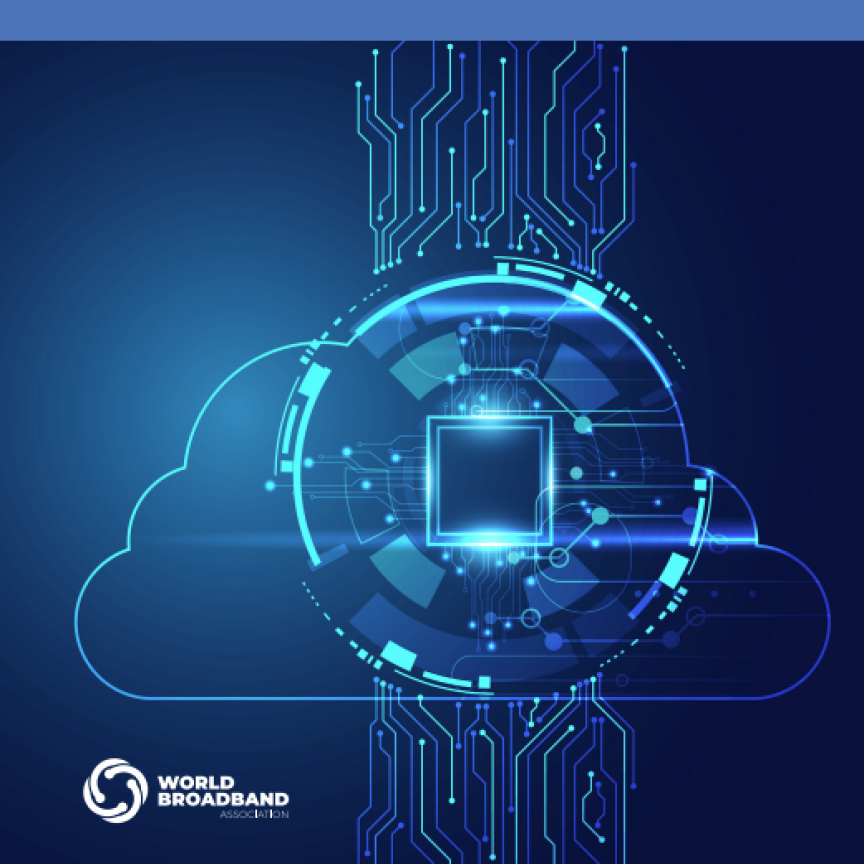IQGeo, a developer of geospatial software for telecom and utility operators, recently announced its planned acquisition of Deepomatic, a specialist in AI-powered computer vision technology. This strategic move is designed to enhance IQGeo's existing platform with advanced AI capabilities for network documentation and field operations, but what are the technical aspects of this acquisition and what might it mean for customers, the industry as a whole? We spoke to Aloïs Brunel, Chief Product Officer of Deepomatic, and James Wheatley, Head of Product Management at IQGeo, to find out.


(L) Aloïs Brunel, Chief Product Officer of Deepomatic, and (R) James Wheatley, Head of Product Management at IQGeo
How are the two technologies complementary?
The two companies had already been working together for around three years, having formed a partnership in 2022. This existing relationship has allowed them to establish technical integrations between their platforms, providing a foundation for a smoother post-acquisition integration process.
IQGeo's core technology is a geospatial platform for telecom and utility operators. Explains Wheatley: "Our overall portfolio solutions are designed to support the operator with their entire network lifecycle from the physical network perspective."
The platform's strength lies in its geospatial component, creating what Wheatley describes as "a digital twin of the physical network" that provides knowledge of where the network is and how it's connected. The system is built on a PostGIS database (based on PostgreSQL) with a standard web architecture that can be deployed on various cloud infrastructures including AWS, GCP, and Azure. It scales using Kubernetes, the native mobility apps for iOS, Windows, and Android ensure seamless offline access for field technicians working on fibre installations.
Deepomatic, meanwhile, specialises in computer vision technology that enables computers and mobile phones to analyse and understand images. "What we do is leverage computer vision to automate quality control and field data collection," says Brunel. The company’s technology analyses photographs taken by field engineers in real-time to verify work quality and document infrastructure properly.
The AI can process images from various aspects of telecom and utility infrastructure, from civil engineering works like trenches to equipment installation in street cabinets and customer homes. "If a human can do it visually through a photograph, the AI is likely to be able to do it as well," says Brunel.
How will the two platforms be integrated?
The existing integration between the two platforms has been relatively straightforward, according to Wheatley. IQGeo's platform is highly configurable, allowing for the addition of fields that represent results from Deepomatic's analysis. When a field technician takes a photo, it's sent to Deepomatic's APIs for analysis, and the results are returned to IQGeo to control workflow processes.
Deepomatic's analysis can occur directly on mobile devices, which means field engineers don't need connectivity to get instant results. The system checks that the right type of photo has been taken for documentation purposes, ensures it hasn't been reused from a previous job, and verifies the quality of the work.
"The first thing we do on photographs is make sure that it is the right photograph for the documentation. Then, we trigger the detection of the things that make it possible to see if the work has been done right or not," explains Brunel. The system can detect whether equipment has been installed correctly, if cables have been patched into the right ports, and if there are any defects in the infrastructure.
Improved data quality and accuracy
One of the main benefits of combining these technologies is the significant improvement in network documentation quality. "Everyone knows the data in inventory is often out of date compared to what's in the real world," says Wheatley. "Any mechanism that we can use to improve that data quality is going to have a significant advantage when we come to automate processes on top of that data."
The acquisition could enable a transformation from manual reporting to "automated, objective, and reliable" data collection, according to Brunel. Field technicians become "the eyes on the network," collecting valuable data while performing their regular duties without any additional effort.
This approach addresses a common challenge in the industry: the disconnect between what's documented in systems versus what exists in the real world. By verifying and updating network information through AI-analysed photos, operators can maintain more accurate records, which would serve as the foundation for better operational decisions and more effective automation.
User experience and field operations
One key aspect of the combined solution is its simplicity for field workers. The technology is designed to minimise disruption to existing workflows. "Taking photographs and reporting is not something that field technicians particularly want to do," Brunel points out. "You have to make it not a burden. It doesn't have to add any friction."
This philosophy has translated into real-world benefits. Wheatley shared an anecdote from IQGeo’s due diligence process where they spoke with a technician installing smart meters, who was using Deepomatic's technology. The technician said that he didn't even realise he was using AI - he just knew that taking photos helped him complete jobs faster by eliminating the wait for manual approval from the office.
"Previously, he would take the photo, he would send it off, and he had to wait on site until someone told him in the office that the photo was good with the installation that he had done," says Wheatley. "That could take hours to get that approval." With the AI-based system, the technician completed his scheduled jobs by lunchtime rather than working into the late afternoon.
Processing half a billion transactions
The technology's scale is impressive - the acquisition announcement mentioned processing half a billion transactions. Brunel explains that these transactions include jobs of all types and all the pictures within these jobs. A significant portion comes from home connections and service activations, which generate high volumes of documentation needs.
"The fact is that such high volume makes it impossible to manually check the quality of those jobs being done, or even to look at pictures, if they're being taken," Brunel says. This scale necessitates automated quality control through computer vision, particularly as the market shifts from network construction to service activation.
Driving adoption in traditional industries
Both telecommunications and utilities have traditionally been slower to adopt new technologies. The combined IQGeo-Deepomatic solution addresses this challenge through simple integration with existing tools and workflows.
"One key element to aid AI adoption, at least in the telecom markets, is the ability to integrate into the existing tools," says Brunel. "You don't want to add another tool. You just want to embed, integrate within what's existing into their existing workflow."
The acquisition promises to enable the companies to provide a bundled product with pre-existing integrations, eliminating the need for customers to build these connections themselves. This approach, coupled with the tangible and easily measurable business benefits, helps overcome adoption barriers in traditional industries.
How will IQGeo and Deepomatic customers benefit?
The combined solution could offer several quantifiable efficiency gains:
- Reduced rework: The system ensures work is done correctly the first time, reducing costly revisits.
Lower quality control costs: Less need for on-site auditors and back-office staff to review work. - Faster revenue realisation: Home connections are completed more quickly, accelerating subscription revenue.
- Improved customer satisfaction: Fewer delays lead to better customer experiences and lower churn.
- Increased field engineer productivity: Less manual reporting and instant feedback allow technicians to complete more jobs.
- Easier onboarding: New technicians learn faster with immediate feedback on their work quality.
Additionally, as data quality improves through the potentially combined solution, operators could see further efficiency gains, thanks to better-automated workflows and fewer manual interventions due to data discrepancies.
Data-driven digital twins
The concept of a "data-driven digital twin" featured prominently in discussions about the acquisition's benefits. Wheatley explains that while digital twins aren't new, applying the concept to entire physical networks represents a significant advance.
"Digital twins are not a new concept. You're often comparing in the context of a piece of equipment," Wheatley says. "We're applying that to the physical network, whether that be telecoms or whether that be utilities."
The combined solution could create a comprehensive digital representation of real physical networks, integrating data from multiple sources - not just the AI-analysed photos from Deepomatic, but also information from test and measurement solutions, fibre sensing, and other operational and business systems.
This more unified view could enable better operational decisions, both reactive and proactive. Wheatley offers an example of how asset health data could influence network design decisions: when planning a network extension to a new housing development, the system might recommend avoiding aerial routes with historically damaged poles, instead suggesting an underground route that would provide better long-term reliability.
Future technology roadmap
Looking ahead 3-5 years, both executives envision AI transforming network lifecycle management through increasingly predictive and proactive capabilities. The immediate integration priorities will focus on increasing the configurability of the existing integration and improving data quality mechanisms.
Brunel is particularly excited about the potential for automated decision-making through AI agents. "This idea that you allow AI agents not just recommending things or decisions to be taken, but actually taking decisions," he says, noting that having all data in one place without silos is essential for this vision.
The acquisition could position the combined companies to address several emerging industry challenges:
- The shift from building networks to commercialising them: As operators focus more on service activation rather than construction, accurate network documentation becomes critical.
- Industry consolidation: The merged solution helps protect network value during acquisitions by providing better visibility and audit capabilities.
- Electric grid upgrades: Utilities face major infrastructure updates to accommodate renewable energy, creating similar documentation challenges to those telecom operators have already experienced.
Conclusion
IQGeo's acquisition of Deepomatic, if approved, could represent a logical combination of complementary technologies that address fundamental challenges in both telecom and utility network documentation and operations. By integrating AI-powered computer vision with geospatial network management, the merged companies aim to create a more accurate digital twin of physical infrastructure, enabling better operational decisions and greater efficiency.
As Brunel summarised, the acquisition's strength lies in bringing together all the necessary components: "We are going to be able to provide a bundle of products that's going to solve all that problem in one go, because the integration is pre-existent. It's already integrated in the mobility app. It's already integrated into the system of records and the workflow management system so that everything is really streamlined."
IQGeo’s acquisition of Deepomatic is subject to completion of the legal and administrative requirements and regulatory review and approval, which is likely to take place in the coming months.


